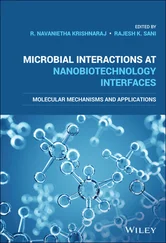All organisms have developmental cycles; at the very least they can switch between active-growth (i.e., log phase) to resting or slow-growth (i.e., stationary phase) stages. Other developmental cycles include sporulation; the production of swarmer cells, cysts, or akinetes; and even terminal differentiation and development into distinct germ and somatic cell types, such as heterocysts in filaments of cyanobacteria, “slugs” in myxobacteria, and the very complex life cycles of Streptomyces species (Fig. 1.7).
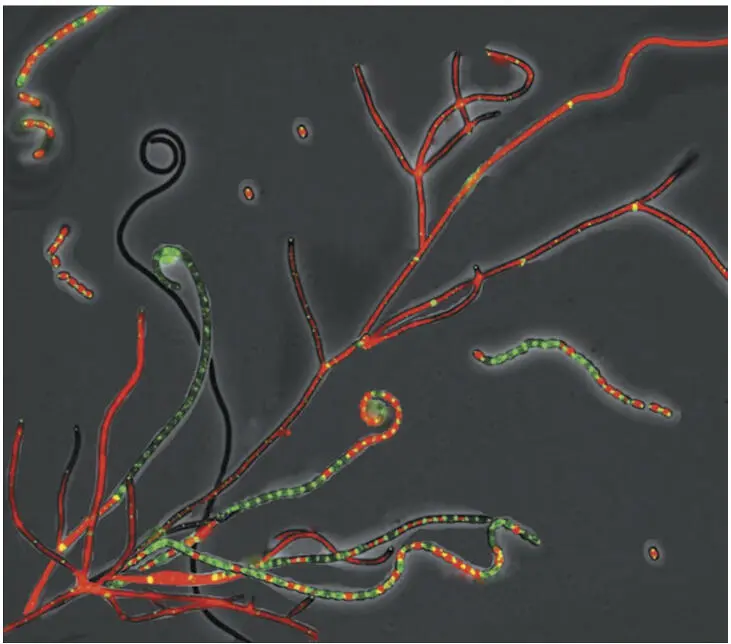
Figure 1.7Overlay of phase-contrast and red and green fluorescent images of sporulating Streptomyces coelicolor grown on SFM agar plates for 3 days. Red fluorescence results from the DNA stain 7-AAD; chromosomes are stained unevenly because the image was made by using live cells. Green is the fluorescence of SsfA-GFP. SsfA, a protein that is upregulated during sporulation and localizes to sporulation septa, has been fused to the green fluorescent protein GFP. Images were taken with a Zeiss fluorescence microscope and further artistically rendered with Adobe Photoshop. (Courtesy of Nora Ausmees.) doi:10.1128/9781555818517.ch1.f1.7
Microbes also respond to their environments metabolically, by expressing the genes needed to compete for the resources available at the time. An example of this would be converting metabolism from oxidative to fermentative when oxygen is exhausted in a culture or from glucose to galactose use when the glucose is used up in a mixed-sugar medium.
In addition, microbes act communally. Organisms communicate by sending and receiving chemical signals or by direct contact. For example, Myxococcus (Fig. 1.8) swarming begins with a chemical signal propagated through the community, which brings the cells into proximity. Direct contact between cells then directs aggregation and formation of fruiting bodies. Microbes also form specific symbioses with other microbes or with macroscopic creatures. Complex communities of microbes associate into “mats” that process and recycle resources throughout the community.
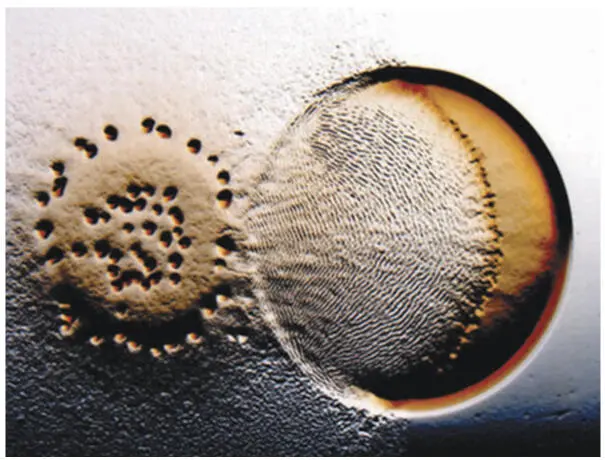
Figure 1.8A swarm of Myxococcus xanthus (left) invading a colony of E. coli (right). (Reprinted from Berleman JE, Scott J, Chumley T, Kirby JR, Proc Natl Acad Sci USA 105:17127–17132, 2008. Copyright 2008 National Academy of Sciences, USA.) doi:10.1128/9781555818517.ch1.f1.8
Underlying all of these different aspects of diversity is genetic diversity, perhaps more specifically viewed as evolutionary diversity. Microbes are far more evolutionarily diverse than are macroscopic creatures; the macroscopic world is just the tip of the iceberg of life. Even most plants and animals are microscopic! So microbial diversity is actually the same as biological diversity, with just a few of the more ponderous organisms overlooked.
Evolutionary diversity is usually expressed in terms of trees: branched graphs that trace the genealogies of organisms (Fig. 1.9). When these trees are based on genetic diversity (gene sequences), they can be both quantitative and objective.
This is the perspective on diversity we are using in this book.
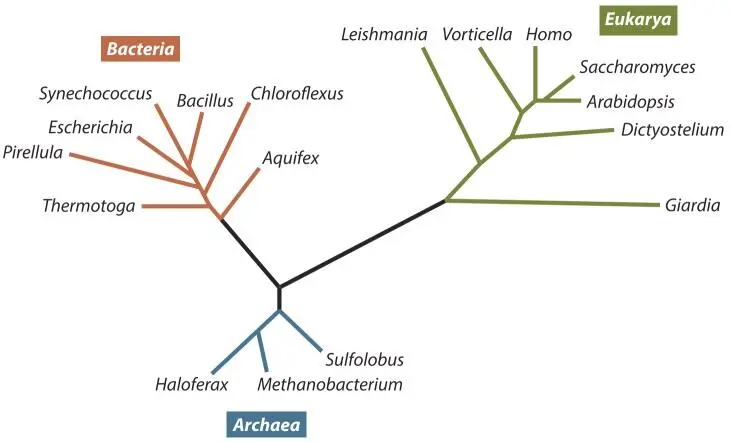
Figure 1.9Phylogenetic tree of representative organisms based on small-subunit rRNA sequences. (Redrawn from an image provided by Norman R. Pace.) doi:10.1128/9781555818517.ch1.f1.9
The fundamental similarity of all living things
Before spending the rest of this book describing diversity, i.e., how organisms differ from one another, it is useful to remember and keep always in mind that all cells are fundamentally the same in almost every way . One way to view this is by walking through the flow of information in the cell—the “Central Dogma” (Fig. 1.10)—and point out the fundamental similarities common to all living things.
All cells encode information in the form of DNA. The DNA in all cells is composed of the same four bases (G, A, T, and C) and the same sugar (2′-deoxy-D-ribose), assembled with the same chemical structure and stereochemistry. Information in DNA is stored by using a universal three-letter code (e.g., AAA encodes lysine in all cells), and the DNA replication process is handled the same in all organisms (the replication fork complexes are all very much alike). The function of DNA is carried out via transcription into RNA, using RNA polymerases that are all essentially alike.
RNA is used primarily to direct protein synthesis based on information in DNA. RNA in all cells has the same structure, the same four bases (G, A, U, and C) and sugar (D-ribose), and the same stereochemistry. Furthermore, all cells have the same types of RNAs, e.g., ribosomal RNA (rRNA), transfer RNA (tRNA), messenger RNA (mRNA), and so forth. These RNAs are very much alike in sequence and structure in all cells; for example, the rRNAs in all organisms share a conserved core of sequence and are very similar in secondary structure (Fig. 1.11).
Polypeptides (proteins) direct most of the cell’s catalysis and structure. Proteins in all cells use the same 20 (or so) amino acids in the same stereochemical conformations, synthesized in the same way, and they use the same posttranslation modifications. Most of the reactions catalyzed by these proteins are the same (see below), and the enzymes that carry them out are similar in amino acid sequence, cofactors, three-dimensional structure, and mechanism of action.
With few exceptions, all cells use the same metabolic pathways: the tricarboxylic acid cycle, glycolysis, amino acid biosynthesis, purine and pyrimidine biosynthesis, lipid metabolism, electron transport, and adenosine 5′-triphosphate (ATP) synthesis via the proton gradient. There is perhaps more variation in metabolism than in the previous parts of the Central Dogma, but these are generally minor variations, such as the use of glycolysis versus the Entner-Doudoroff pathway.

Figure 1.10The Central Dogma: flow of information from archive (DNA) to function (protein function). doi:10.1128/9781555818517.ch1.f1.10
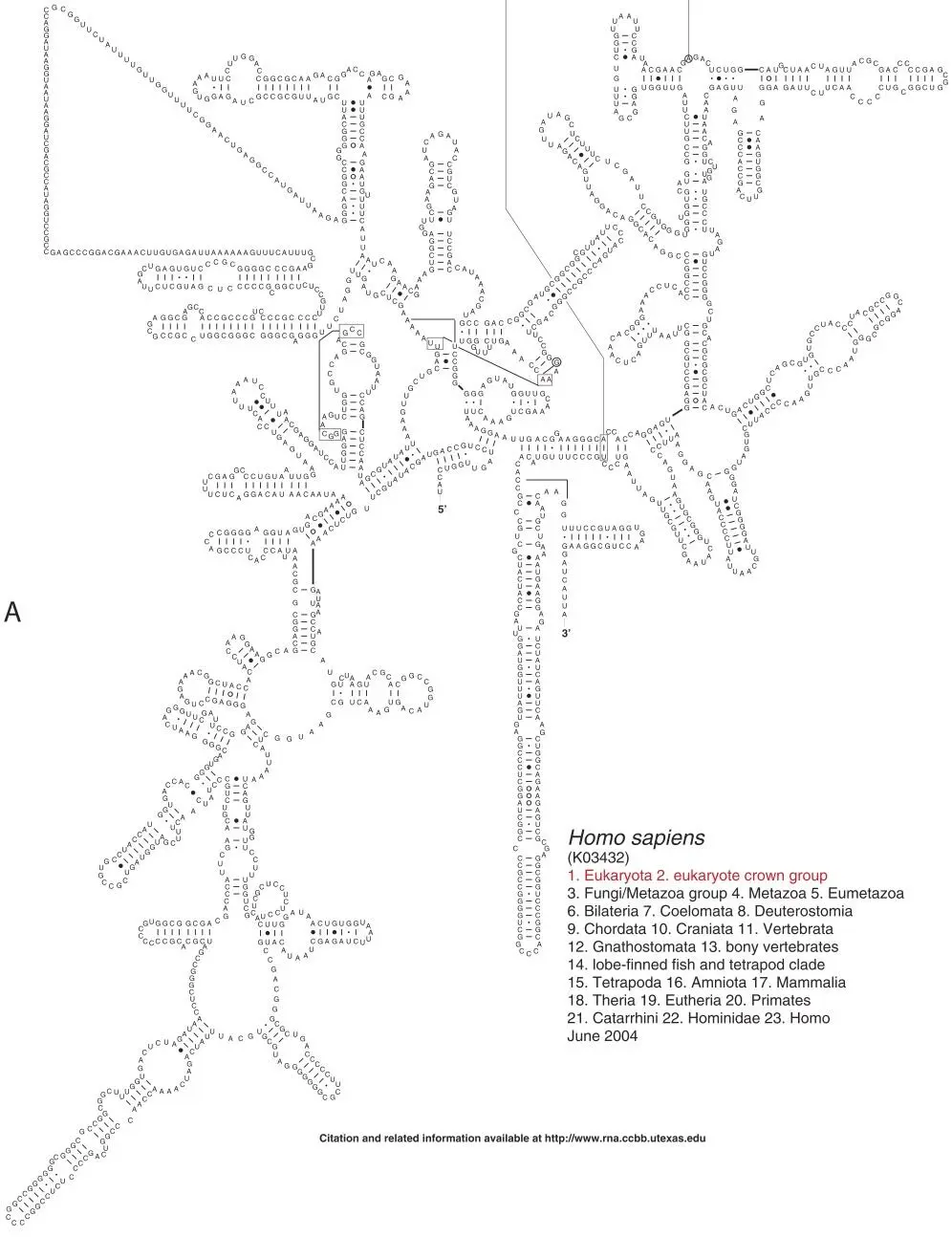
Figure 1.11A Homo sapiens versus E. coli (B) small-subunit rRNA secondary structures. (Courtesy of Robin Gutell.) doi:10.1128/9781555818517.ch1.f1.11A
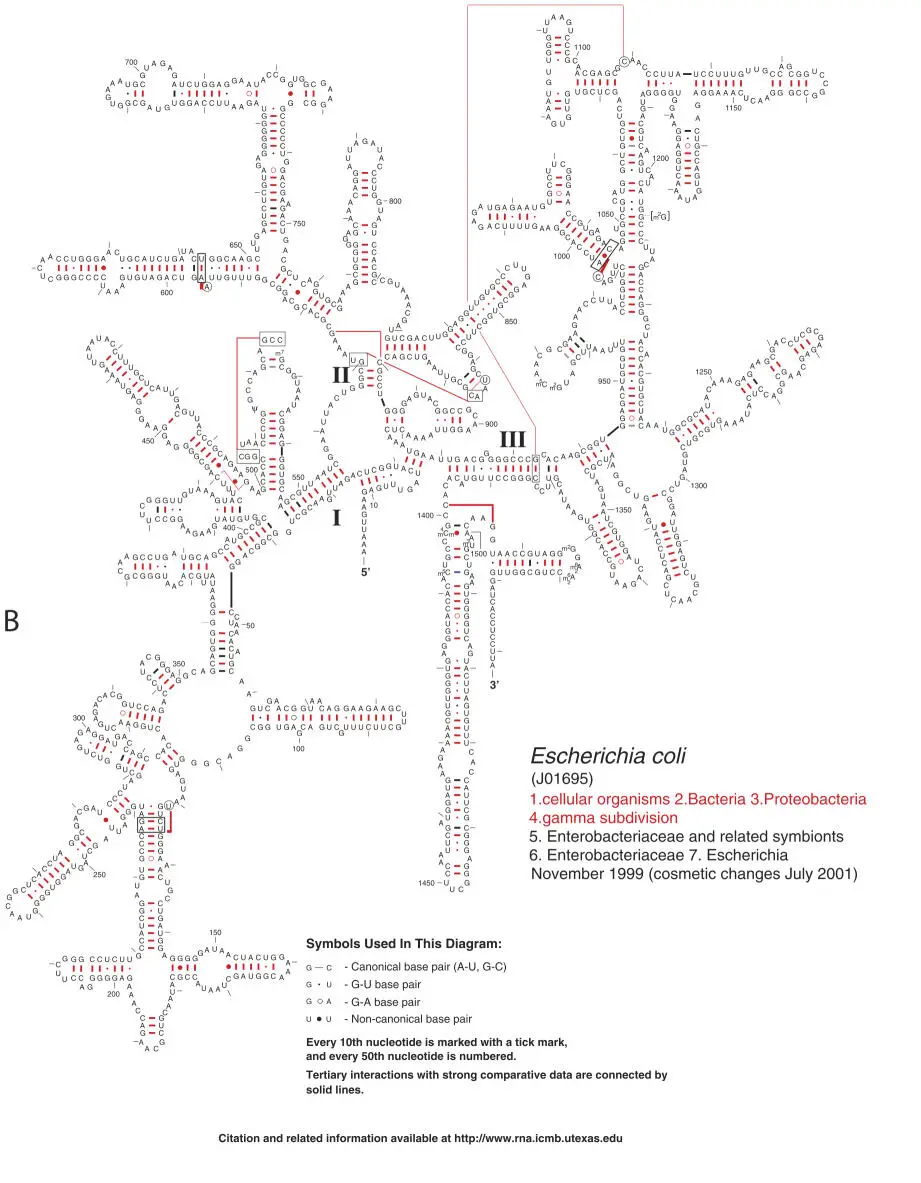
Figure 1.11Bdoi:10.1128/9781555818517.ch1.f1.11B
Читать дальше














